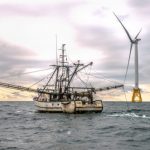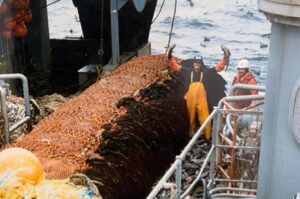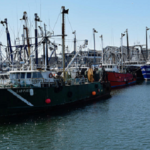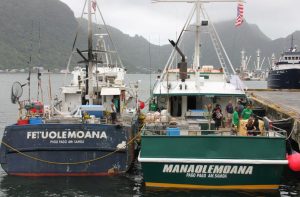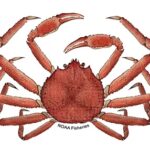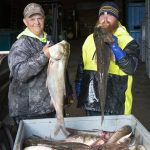Tag Archives: history
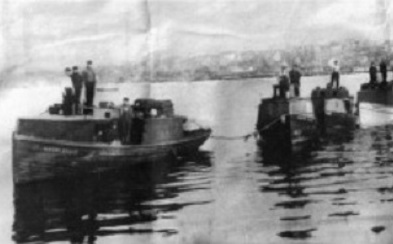
Help us learn more about the “Michigan Bears” and the men who fished aboard Gloucester’s oldest fishing vessel, the Phyllis A.
On September 6, 1920 five small vessels arrived in Gloucester Harbor and tied up in Smith Cove near Rocky Neck. The little boats and the 20 men who crewed them, had spent 24 days traveling 2,200 miles from Charlevoix, Michigan to start a new life for them selves and their families, doing a method of fishing that had been introduced, but not welcomed, by the fishing industry on the east coast of the Atlantic in the late 1800’s,,, gill net fishing, used here in Gloucester and the East coast to this day. >click to read<21:21
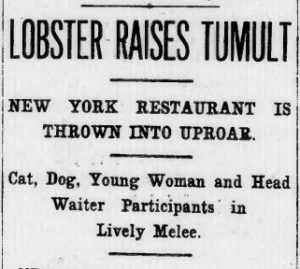
1910: A Cat, A Bulldog, and a Lobster Walk into a Harlem Restaurant…
This quirky animal tale of Old New York begins on a Sunday night in May 1910 when Gus, a brindle bulldog, walked into Fay’s restaurant at 255 West 125th Street in Harlem around 7 p.m. and sat down for dinner with his master. Gus was reportedly well behaved, so he was allowed to sit with his owner, Miss Rose Leland of 516 West 179th Street, as long as his leash was wrapped around her chair while they both ate their dinners. Outside on the sidewalk was an icebox, where live lobsters were kept. >click to read< 09:55
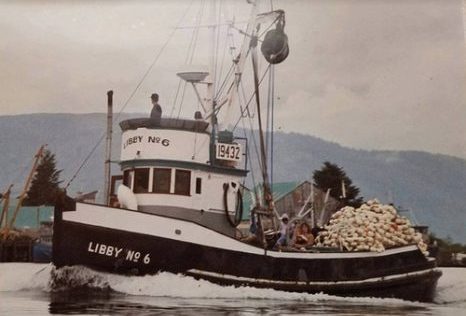
Then and Now: Craig cannery
Just about every town in Southeast Alaska has a cannery. Some have several. I don’t know if its true or not but I heard that at one time Ketchikan had 17. For generations, the Craig cannery was like a vital organ, the heartbeat of town and the primary source of livelihood and activity. Craig woke up each spring with the cannery, and went into hibernation each fall when the purse-seining season was over. I’m a commercial fisherman(Ralph Mackie). My deckhand, who graduated from high school last May, wouldn’t describe the cannery that way at all. >click to read< 17:21
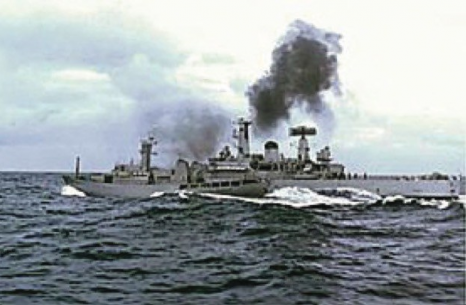
This Day In Icelandic History: The First Casualty Of The Cod Wars Strikes
1976 was the year the Cod Wars between Iceland and Britain ended, but it was not without at least one casualty. The Cod Wars comprised a series of conflicts between Iceland and Great Britain over the use of fishing waters in the North Atlantic. Clashes between the two nations were, for the most part, bloodless. British warships and Icelandic trawlers would get intimidatingly close to one another, sometimes even ramming one another, but for much of the time the conflict was diplomatic. All that would change on February 19 of 1976. >click to read< 10:11
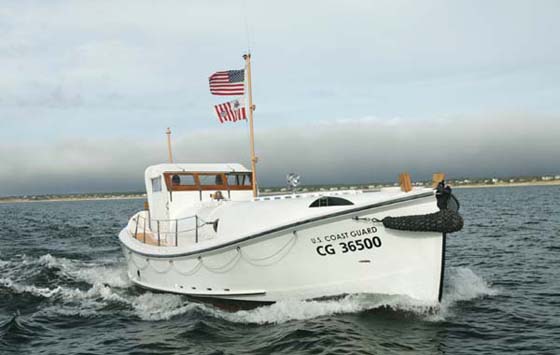
On This Day: February 18 – 1952: Coast Guard rescues 32 sailors from stricken tanker Pendleton
On this day in 1952, one of the most daring rescues in the history of the Coast Guard took place six miles off Chatham. The tanker Pendleton, en route to Boston from Baton Rouge with a cargo of oil, split in two during the winter’s worst storm. Eight crew members were trapped on the ship’s bow; another 33 sailors were stranded on the Pendleton’s stern. And in 1875: Twenty-four Cape Cod fisherman lost as two schooners fail to return from Grand Banks >click to read< 08:52
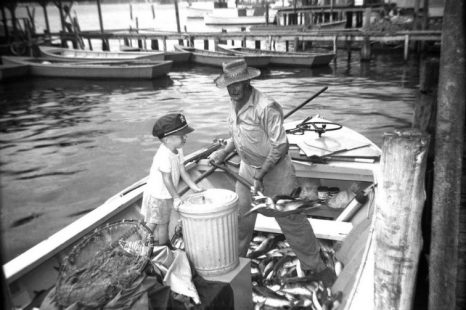
Linda Brandt: Mullet is so much more than bait
I grew up thinking mullet was only for bait and smoking for dip. That was probably because when I went fishing with my dad, he used mullet for bait. And because he fished with a rod and reel and mullet are mostly caught with cast nets, they didn’t show up freshly caught on our table. Apparently I have been missing out on not only one of Florida’s oldest delicacies, but a piece of state history as well. >click to read< 15:30
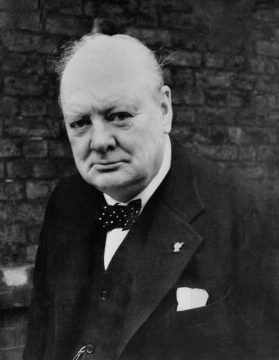
“We shall fight on the beaches” – Michael Gerson: ‘Darkest Hour’ proves that history can hinge on a single leader
But the central conceit of the film — that a deflated, defeated Churchill required bucking up by average Brits — is a fiction. Very nearly the opposite was true. The policy of appeasement was broadly popular in Britain during the early to mid-1930s. In 1938, a majority supported Neville Chamberlain’s deal at Munich (which ceded much of Czechoslovakia to Nazi Germany in return for … nothing). It is more accurate to say that Churchill summoned British courage and defiance by his intense idealization of British character. He saw heroic traits in his countrymen that even they, for a time, could not see. click here to read the story 09:13

On This Day: Dec. 11, 1975 – Attack on British vessels heightens Cod War
An Icelandic gunboat has opened fire on unarmed British fishery support vessels in the North Atlantic Sea, it is reported. The violent clash left the Icelandic coastguard ship, Thor, badly damaged but the three British vessels involved appear to be unaffected. The Thor is said to have tried to arrest the British Star Aquarius and her sister vessel the Star Polaris as they sheltered from a force nine gale within Iceland’s 12 mile territorial waters. click here to read the story 09:03

History — and crabbing — run deep in the Chesapeake Bay town of Hampton
It’s well before dawn and I’m driving through the darkness down a rutted dirt lane toward a small commercial boat marina on the outskirts of Hampton, Va. Pulling up, I can just make out the figure of Lee Smith in the light of a streetlamp. Smith is a fourth-generation Chesapeake Bay waterman who has agreed to take me out on his fishing boat while he harvests blue crabs.,,, “I’m a waterman, not a fisherman,” Smith told me, explaining that while he does trawl for fish, he does much more, including crabbing, clamming and oystering. Watermen have to be versatile to make a living, he says, and that means possessing the skills and equipment to catch whatever is both legally fishable and abundant enough to make money. click here to read the story 20:11
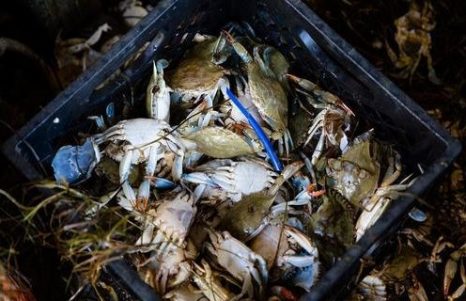
On Smith Island, Crab Is Everything. What happens when no one’s around to catch Maryland’s prized blue crab?
It’s the hottest day of the summer on the Eastern Shore of Maryland, and at a tiki bar that doesn’t serve alcohol on a windless island in the middle of the Chesapeake Bay, two teenage boys appear, one holding up a small, live blue crab. “Hey Steve, will you cook this for me?” the boy holding the crab asks Steve Dunlap, who’s behind the bar. “Aw, put it back, Robert,” Dunlap says. Robert sulkily obliges, letting the crab scuttle off into the bay, but makes it clear that he wasn’t going to kill it. Here, on Smith Island, Maryland, there is an overpowering respect, almost a reverence, for the blue crab. At the dead center of the mouth of the Chesapeake Bay, 12 miles from Maryland’s shore, Smith is a central part of the Maryland crabbing industry, and has been for generations. Here, crab is everything: Food, money, work, family, tradition, history. Crab is life. But it might not be for very much longer. click here to read the story 09:36
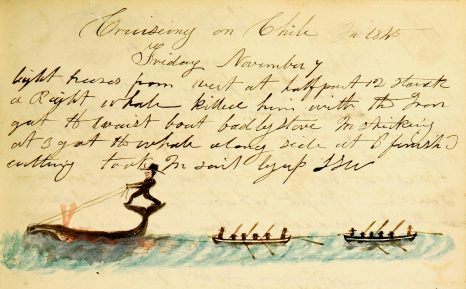
How Nantucket Came to Be the Whaling Capital of the World
Today Nantucket Island is a fashionable summer resort: a place of T-shirt shops and trendy boutiques. It’s also a place of picture-perfect beaches where even at the height of summer you can stake out a wide swath of sand to call your own. Part of what makes the island unique is its place on the map. More than 25 miles off the coast of Massachusetts and only 14 miles long, Nantucket is, as Herman Melville wrote in Moby-Dick, “away off shore.” But what makes Nantucket truly different is its past. For a relatively brief period during the late 18th and early 19th centuries, this lonely crescent of sand at the edge of the Atlantic was the whaling capital of the world and one of the wealthiest communities in America. click here to read the story 14:46
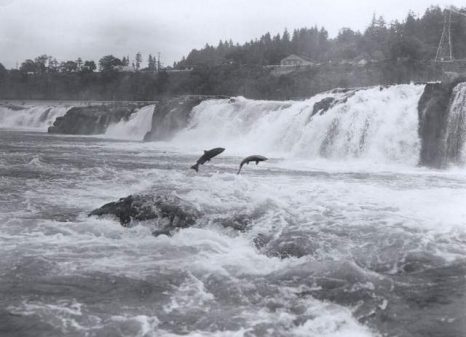
Salmon in the history of the Pacific Northwest
Lewis and Clark’s interpreter and guide Sacagawea was a “Salmon Eater.” That’s what they called her tribe of Lemhi Shoshone Native Americans, a nomadic band who lived in Idaho’s Lemhi River Valley and along the upper Salmon River — their descendants today living mostly on the Fort Hall Indian Reservation near Pocatello. Sacagawea’s tribe was made up of the Agaidikas or Salmon-Eater Shoshone and the Tukidikas. Sacagawea belonged to the Agaidikas. Food was almost always a big challenge for Lewis and Clark’s Corps of Discovery expedition. click here to read the story 19:43
On This Day – September 28, 1889: Cape fishermen heading for South Africa for mackerel
 A century ago the fishermen on Cape Cod were making plans to spend the winter fishing for mackerel off the Cape of Good Hope off the southern tip of Africa, a distance of almost 8,000 miles away from homeport. For the wives of the Cape’s fishermen that would mean nearly year-round widowhood as the trip a century ago took weeks under the best of conditions and mackerel were believed to abound in South African waters after December 1st, the same fish seen here six months later. The Cape Cod schooners will salt the mackerel and return to Provincetown to sell their catch. The reprint of the story in The New York Times from a century ago is below. click here to read the story 08:18
A century ago the fishermen on Cape Cod were making plans to spend the winter fishing for mackerel off the Cape of Good Hope off the southern tip of Africa, a distance of almost 8,000 miles away from homeport. For the wives of the Cape’s fishermen that would mean nearly year-round widowhood as the trip a century ago took weeks under the best of conditions and mackerel were believed to abound in South African waters after December 1st, the same fish seen here six months later. The Cape Cod schooners will salt the mackerel and return to Provincetown to sell their catch. The reprint of the story in The New York Times from a century ago is below. click here to read the story 08:18
Wondering about the success of this venture? click here to read a bit more about it! pg. 196
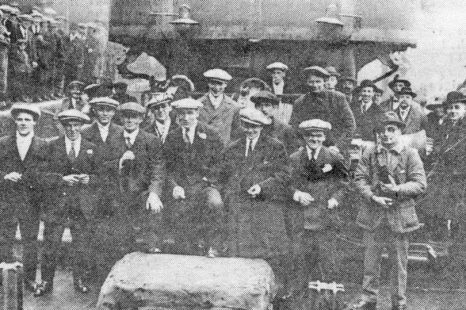
Sargon trawler came back from the dead in the days of no radio
In these days when ships are fitted with powerful radio apparatus with worldwide range, it is easy to forget the days when a ship was completely out of touch when she was out of sight of land. She could be lost for weeks on end. A classic example was the Sargon, missing from Grimsby for nearly a month and given up as lost with all hands. She was eventually picked up and returned to port in triumph. Sargon’s epic cruise started on January 5, 1923 when she sailed from Grimsby for the Murmansk coast. click here to read the story 17:51

Grimsby man stole his boat – and world fame
Some called him The Lone Captain, the BBC called him The Buccaneer. He called himself a Freelance of the Sea. But a criminal court judge had other words in mind and sent him to prison – and hard labour – for 18 months. But history, which dwells inordinately on the glamour of swashbuckling, has found a friendly niche for Dod Orsborne, a curious Jekyll and Hyde of a man who, in 1936, stole a seine netter from its owner and sailed out of Grimsby and into the newspaper headlines of the world. click here to read the story 12:56
Former deep-water fisherman reveals the tough, basic and disciplined life he had at sea
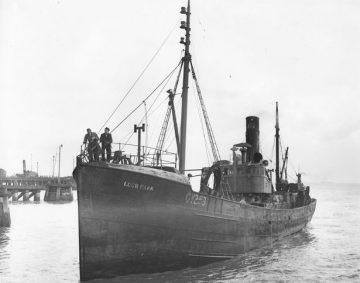 After my last trip on the Black Watch as relief bosun I found myself ashore with some time to myself for a change. However, like I thought, it was not long before offers of another ship came along, leaving me with some really good choices. Some of them I turned down for genuine reasons, like the Northern Crown, because that offer had come far too soon after my last voyage to Greenland, which would not have allowed me even 72 hours in dock. Also I had offers from the very first company that I’d ever sailed in when I left school at the tender age of 15. On that occasion I left school on Easter Friday and went to sea the following Tuesday aboard the Alfred Bannister owned coal burner Loch Park (GY 259). Life aboard those grand old ladies of the sea was so tough, basic and disciplined from the salty old characters who sailed in them, you just couldn’t help but learn the job pretty fast. Michael Sparkes click here to read the story 13:56
After my last trip on the Black Watch as relief bosun I found myself ashore with some time to myself for a change. However, like I thought, it was not long before offers of another ship came along, leaving me with some really good choices. Some of them I turned down for genuine reasons, like the Northern Crown, because that offer had come far too soon after my last voyage to Greenland, which would not have allowed me even 72 hours in dock. Also I had offers from the very first company that I’d ever sailed in when I left school at the tender age of 15. On that occasion I left school on Easter Friday and went to sea the following Tuesday aboard the Alfred Bannister owned coal burner Loch Park (GY 259). Life aboard those grand old ladies of the sea was so tough, basic and disciplined from the salty old characters who sailed in them, you just couldn’t help but learn the job pretty fast. Michael Sparkes click here to read the story 13:56
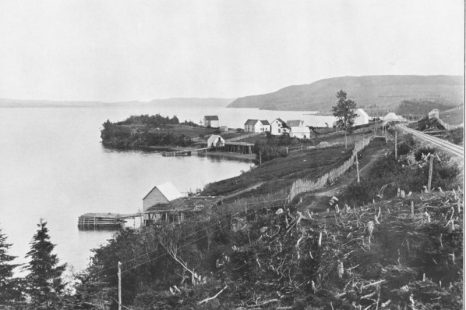
Paul Sparkes: To wit — a barrel of herring
In the middle of November 1906 at 10:30 in the morning Alexander Dubois and George Crane were summoned before Magistrate Levi March at Bay of Islands to answer to the charge of breaching Newfoundland’s Bait Act. As Commissioner in that region, Joseph O’Reilly, J.P., was the plaintiff — the man who advanced Newfoundland’s case. The defendants had lawyers but witnesses clearly told the magistrate that they had seen the two Wood’s Island men placing herring (a bait fish) aboard the American schooner Ralph L. Hall. And, woe to them for it seems to have been well known by witnesses that the two did not hold vendors’ licences. And that was essential under Newfoundland law at the time. Mind you, we are talking about three tubs of herring. click here to read the story 12:38
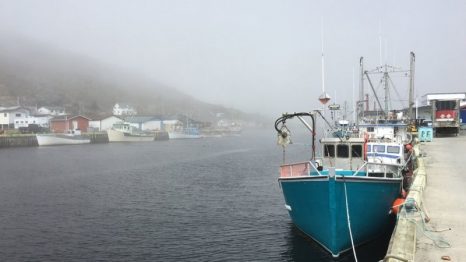
Can cod comeback keep a Canadian fishery afloat?
A generation after Canada declared a moratorium on northern cod fishing off the coast of Newfoundland and Labrador, the species is making a comeback. But can the province’s troubled fishery survive to take advantage of cod’s resurgence? The wharf in Petty Harbour is quiet, and Todd Chafe, a 46-year-old fisherman, is slicing up cod for a nearby family restaurant in a shack near the water. “Some fellas like to point fingers: ‘Ah, this done it, foreigners done it’,” he says. Chafe is talking about the collapse of northern cod off the coast of Newfoundland and Labrador 25 years ago. “We all done it, every single person that went fishing done it. Everybody fished for it so everybody had a hand in destroying it.”,,, Now there is a glimmer of hope. Northern cod stock has reached about 25% of the levels seen in the ’80s. But there is a fierce debate over what the return of cod fishing should look like in Newfoundland. click here to read the story 20:22
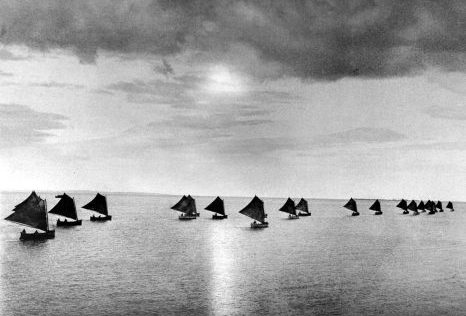
When sailboats ruled Bristol Bay
One hundred and thirty-two years ago, the Bristol Bay commercial fishery began on the shores of the Nushagak River when the first cannery went into operation and canned a little more than 4,000 salmon. Within four years, three more canneries appeared on the Nushagak, and within a decade canneries were built on the Naknek and Kvichak rivers. The dawn of the 20th century saw dozens of canneries around Bristol Bay catching, processing and canning millions of pounds of sockeye salmon every summer. By 1910, Bristol Bay accounted for 40 percent of Alaska’s commercially caught salmon. Even today, Bristol Bay makes up about 40 percent of Alaska’s salmon value. Canneries are large industrial operations. In the early days, coal and steam provided the power to run complex systems of boilers, belt-driven pulleys and winches needed to butcher, cook, can and deliver salmon to the world. But when it came to actually catching fish in Bristol Bay, canneries relied upon the muscle of men and the power of wind. click here for images, and read the story 11:27
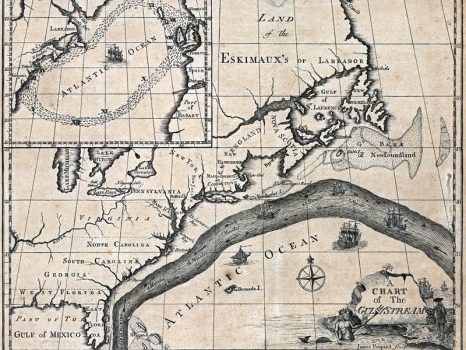
Benjamin Franklin Was the First to Chart the Gulf Stream
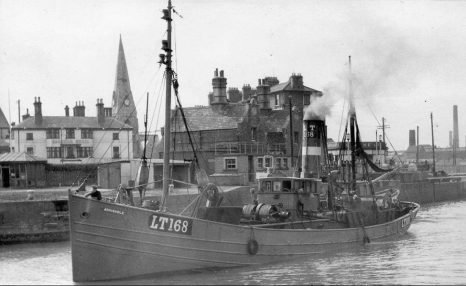
When Lowestoft boats went to fish from Canada
There was an interesting time, way back in the early 1950s, when several drifter/trawlers and trawlers from Lowestoft were sent on the long trip to Nova Scotia to ply their trade, reports Mick Harrod. The first Lowestoft boats to make this voyage were Acorn LT 31, skippered by Ivan Down, and Boston Swift LT 377, in September of 1954. Acorn was a steamer, built in 1919 at Aberdeen and the story goes that, although she was filled with coal, including in the fish hold and ice lockers, she still ran out of fuel in the last few miles and was towed in by Boston Swift. The agreement with Mercury Fisheries Ltd, of Halifax, Nova Scotia, was that the crew initially signed on for six months and then, if they liked it enough, they could have permanent berths and their families would get assistance to move to Canada. click here to view more images, read the story 09:36

Montauk 1915: When the Village Was on the Arc of Fort Pond Bay
The wooden shacks composing this village had all been built around 1895 by people who did not own this land. They were squatters on this arc of the bay on land owned by the Long Island Rail Road. The railroad did not stop this village from being built. In fact, they encouraged it. Probably it was because money changed hands between these people and the railroad. The people were commercial fishermen and their families. And they brought in tons of fish from the sea to that single pier and paid for the railroad trains nearby to transport their daily haul of fish to the thriving markets in New York City.,, These fishermen were not even Americans. They were Canadians. They were out of port towns in Nova Scotia, a long way from home, and they had full holds of fish to bring to market. And here, along the arc of this bay, was this nearly abandoned railroad station in the middle of nowhere. There was even a long pier. They’d tie up and meet the stationmaster there. Yes, the tracks led 110 miles straight into Manhattan. A very interesting read! click here to read the story, and click the link to the Pelican The Single Worst Fishing Disaster in the History of Montauk 09:40
On this Day: June 30 – 1911: Coastal Steamer Nacoochee Runs Down Fishing Schooner Off Cape Cod.
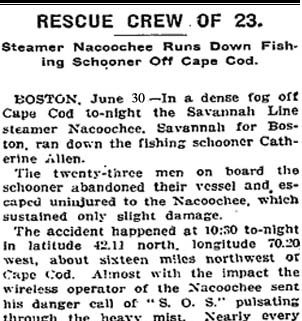 On this day in 1911 one of the many coastal steamers of the era sank a large fishing schooner 16 miles northwest of Provincetown. Since the canal was not completed yet, all ships had to sail a round the outer shore of Cape Cod, and the area was also rife with commercial fishing boats. The headline in the newspapers the next day blared: RESCUE CREW OF 23.; Steamer Nacoochee Runs Down Fishing Schooner Off Cape Cod. BOSTON, June 30. — In a dense fog off Cape Cod to-night the Savannah Line steamer Nacoochee, Savannah for Boston ran down the fishing schooner Catherine Allen… (Read the rest on the right.) Read the rest here 14:20
On this day in 1911 one of the many coastal steamers of the era sank a large fishing schooner 16 miles northwest of Provincetown. Since the canal was not completed yet, all ships had to sail a round the outer shore of Cape Cod, and the area was also rife with commercial fishing boats. The headline in the newspapers the next day blared: RESCUE CREW OF 23.; Steamer Nacoochee Runs Down Fishing Schooner Off Cape Cod. BOSTON, June 30. — In a dense fog off Cape Cod to-night the Savannah Line steamer Nacoochee, Savannah for Boston ran down the fishing schooner Catherine Allen… (Read the rest on the right.) Read the rest here 14:20
Shrimp became the top value catch for the state’s fishermen – North Carolina shrimp was a big deal
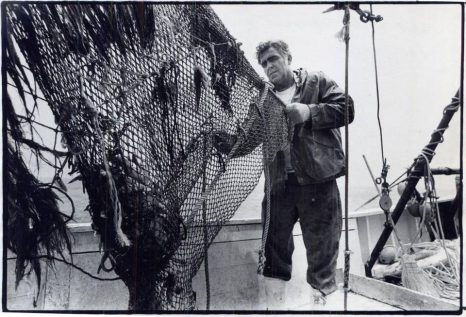 The life of commercial shrimpers can be unpredictable, as supply and the market vary. In 1953, writer Wade Lucas presented an optimistic view of the industry from Morehead City. Rested, ready and eager to get going after what some people down this way refer to as “white gold,” owners and operators of a large fleet of boats will be shoving off from various coastal points … in search of the wily shrimp that are now beginning to move in commercial quantities in State-controlled waters. By 1966, North Carolina shrimp was big business, as detailed by writer Frank Montgomery Jr. It takes an awful lot of shrimp to make all those shrimp cocktails Tar Heels eat in a year’s time. And to see that everybody in the Old North State gets enough of them, big and little shrimp boats, with some sort of trawl hung astern, pursue their quarry all through the year with zeal and gusto. From Pamlico Sound clear down to the South Carolina line, both inside and outside Carolina coastal waters get a regular and thorough going-over by the State’s shrimpers as they seek to supply a demand that never seems to slacken. Interesting. Read the story here 14:58
The life of commercial shrimpers can be unpredictable, as supply and the market vary. In 1953, writer Wade Lucas presented an optimistic view of the industry from Morehead City. Rested, ready and eager to get going after what some people down this way refer to as “white gold,” owners and operators of a large fleet of boats will be shoving off from various coastal points … in search of the wily shrimp that are now beginning to move in commercial quantities in State-controlled waters. By 1966, North Carolina shrimp was big business, as detailed by writer Frank Montgomery Jr. It takes an awful lot of shrimp to make all those shrimp cocktails Tar Heels eat in a year’s time. And to see that everybody in the Old North State gets enough of them, big and little shrimp boats, with some sort of trawl hung astern, pursue their quarry all through the year with zeal and gusto. From Pamlico Sound clear down to the South Carolina line, both inside and outside Carolina coastal waters get a regular and thorough going-over by the State’s shrimpers as they seek to supply a demand that never seems to slacken. Interesting. Read the story here 14:58
On Ernest Hemingway’s great love: His boat
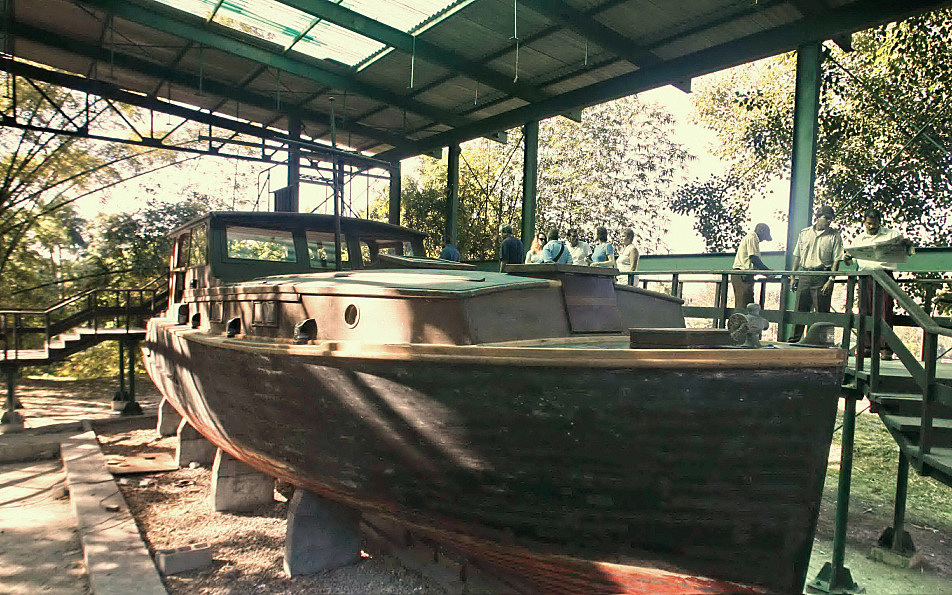 Paul Hendrickson’s new biography of Ernest Hemingway is a story of love and companionship, between Hemingway and Pilar — his boat. “She had been intimately his, and he hers, for 27 years, which were his final 27 years,” Hendrickson writes of Pilar, the fishing vessel Hemingway docked in Cuba. When Hendrickson first saw Pilar, which has outlived Hemingway by more than half a century, the boat was “dying in the sun” at Finca Vigia, Hemingway’s house 12 miles outside Havana. Now, with Cuba’s tourism industry kicking into high gear thanks to the thawing of relations between the island nation and the U.S., the boat has been restored. For the full interview with Paul Hendrickson on “Hemingway’s Boat,” use the audio player above. Click here 08:34
Paul Hendrickson’s new biography of Ernest Hemingway is a story of love and companionship, between Hemingway and Pilar — his boat. “She had been intimately his, and he hers, for 27 years, which were his final 27 years,” Hendrickson writes of Pilar, the fishing vessel Hemingway docked in Cuba. When Hendrickson first saw Pilar, which has outlived Hemingway by more than half a century, the boat was “dying in the sun” at Finca Vigia, Hemingway’s house 12 miles outside Havana. Now, with Cuba’s tourism industry kicking into high gear thanks to the thawing of relations between the island nation and the U.S., the boat has been restored. For the full interview with Paul Hendrickson on “Hemingway’s Boat,” use the audio player above. Click here 08:34
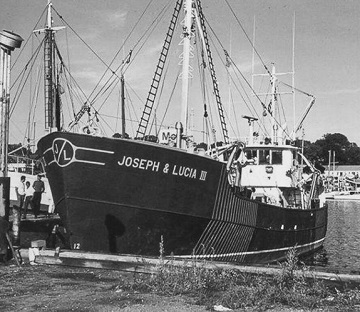
Memories of a Highliner’s Son, by Big Tom Brancaleone
My family fished out of Gloucester on the Joseph & Lucia I, II and III, for over 50 years- as boat owners, captain and crew. They worked hard and were successful in their labors. They were known for being fair to their crews and had a propensity for fishing in bad weather. As a child I can remember the worried look on my mother’s face as our home on the Boulevard shook and the storm windows squealed and shuddered. The boat was out in yet another storm. Their hope was to be the only boat to market and to fetch a big price when they finally made it back to port,,, Read the rest here 11:11
Where Have All the Cod Gone?
 As early as the 1850s, fishermen from Maine and Massachusetts began to pester their governments to do something about declining cod catches. Those men fished with hooks and lines from small wooden sailboats and rowboats. Fearing “the material injury of the codfishing interests of this state” by increased fishing for menhaden, a critical forage fish for cod, fishermen from Gouldsboro, Me., implored the Legislature in 1857 to limit menhaden hauls. Read the rest here 18:04
As early as the 1850s, fishermen from Maine and Massachusetts began to pester their governments to do something about declining cod catches. Those men fished with hooks and lines from small wooden sailboats and rowboats. Fearing “the material injury of the codfishing interests of this state” by increased fishing for menhaden, a critical forage fish for cod, fishermen from Gouldsboro, Me., implored the Legislature in 1857 to limit menhaden hauls. Read the rest here 18:04
Fishing industry, aviation linked in Alaska from earliest days
After proving itself in the mid-1920s conducting surveys of Southeast Alaska, the airplane found itself unexpectedly increasingly useful to the burgeoning fishing industry in the state. This came as a surprise to many, as it was a largely untested mode of transportation and the region’s weather was so problematic. But as soon as the first flight was made across the Gulf of Alaska in 1925, the numbers were impossible for even the most nervous passengers to ignore. Read the rest here 15:27






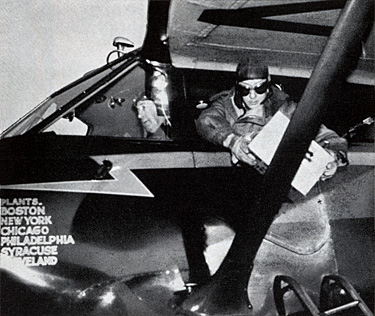 Airplanes, helicopters, lighthouses and a Santa Claus delivering toys along with coffee, tea, potato chips and shaving products. Seems like a strange mix for a 84-year tradition to be based on. This annual New England occurrence, though always appreciated by its recipients, has not always been completely understood. There are many elements that make up the Flying Santa experience and we hope to enlighten people with the following account of its history and customs. Through personal recollections, newspaper accounts and family histories we have been able to put together a detailed report on the origins of the Flying Santa and its evolution over the past 84 years. We continue to research the accounts of years past, so this is by no means the final word on the origins and history of the “Santa of the lighthouses”. By Brian Taque
Airplanes, helicopters, lighthouses and a Santa Claus delivering toys along with coffee, tea, potato chips and shaving products. Seems like a strange mix for a 84-year tradition to be based on. This annual New England occurrence, though always appreciated by its recipients, has not always been completely understood. There are many elements that make up the Flying Santa experience and we hope to enlighten people with the following account of its history and customs. Through personal recollections, newspaper accounts and family histories we have been able to put together a detailed report on the origins of the Flying Santa and its evolution over the past 84 years. We continue to research the accounts of years past, so this is by no means the final word on the origins and history of the “Santa of the lighthouses”. By Brian Taque  When Nubar Alexanian started visiting Gloucester in 1971 as a young man of 21, the harbor bustled with fishing vessels that hauled in millions of pounds a fish a day. He captured the hive of activity among the Gloucester-based fleet from onshore and on extended trips offshore. The Worcester-born photographer soon made the nation’s oldest seaport his home, immersing himself into the cornucopia of Gloucester life and landscape.
When Nubar Alexanian started visiting Gloucester in 1971 as a young man of 21, the harbor bustled with fishing vessels that hauled in millions of pounds a fish a day. He captured the hive of activity among the Gloucester-based fleet from onshore and on extended trips offshore. The Worcester-born photographer soon made the nation’s oldest seaport his home, immersing himself into the cornucopia of Gloucester life and landscape. 































